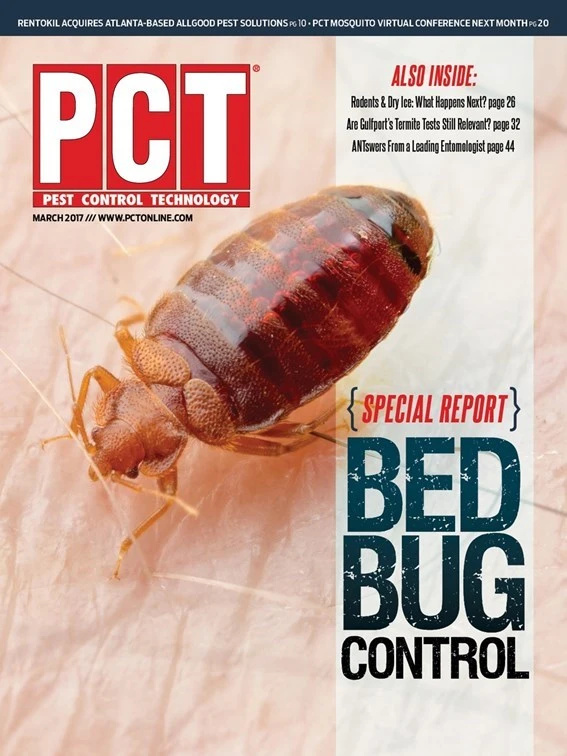
Bat bugs (Cimex adjunctus Barber) are mainly bloodsuckers of bats, but rarely, they’ll feed on human blood if their host blood is unavailable. Although bat bugs do not transmit any disease-causing pathogens to humans, their bites can cause insomnia, anxiety and panic to sensitive individuals. They are frequently confused for bed bugs, and eventually will feed in a similar fashion. Recently bat bug infestations seem to be on the rise. Thus, it is important to shed some light on the identification, biology and management of these pests. Since bat bugs treatments are different from bed bugs, correct identification is critical for success. Bat bugs and bed bugs (C. lectularius L.) look nearly identical to the naked eye. However, under a stereoscope (magnification between 20x and 50x), one distinguishing feature is that the fringe hairs on the pronotum (the upper covering of the thorax) of the bat bug are as long or longer than the width of the eye, but are shorter in the bed bug.
Bed bugs and bat bugs have different habits. The primary hosts of bat bugs are a variety of bat species, especially the big and little brown bats, which roost in colonies, but they can feed on warm-blooded creatures, including humans in the absence of bats. Bat bugs are often encountered inside a structure when bats are established in attics, wall voids, unused chimneys, or any uninhabited places of the building. Typically, bat bugs are found in cracks and crevices in bat roosting areas. But, if the primary hosts (bats) leave the nesting area, die or are eliminated, bat bugs start moving inside a structure within one to four weeks to feed on alternative hosts. Although uncommon, these include birds, rodents and humans. Once in living places and having found a host on which to live, bat bugs will become established the same way as bed bugs. They will hide in mattresses and box springs, bed frames and furniture. Additionally, they will spread the same way as bed bugs.
To eliminate bat bugs, bats must be excluded from access into buildings. Once bats are removed, thorough crack, crevice and spot treatments of residual insecticides (dust formulations are preferred in voids where they will not drift to non-target areas) to all bat harborage/roosting places (usually attics) are needed. Pay particular attention to areas around objects leading indoors, such as light fixtures, vents, plumbing chases and chimneys. These treatments are critical to kill bat bugs moving to living places after losing their host. After that, thoughtfully treat around light fixtures and ceiling moldings.
If you see oval-shaped, brown bugs about the size on an apple seed crawling down a chimney or from an attic, especially in a location with no bed bug signs or history, immediately identify and confirm the species. Then, schedule treatment as soon as possible before it’s too late. Bat bugs can lay many eggs and thrive in a short period of time. Consequently, the cost and time for treatments will be considerably increased over time if left unmanaged. Finally, make sure to set up treatment expectations with your customers. It is not unusual to see bat bugs showing up in living places for several weeks after treatment before they are gone for good.

Explore the March 2017 Issue
Check out more from this issue and find your next story to read.
Latest from Pest Control Technology
- Donny Oswalt Shares What Makes Termites a 'Tricky' Pest
- Study Finds Fecal Tests Can Reveal Active Termite Infestations
- Peachtree Pest Control Partners with Local Nonprofits to Fight Food Insecurity
- Allergy Technologies, PHA Expand ATAHC Complete Program to Protect 8,500 Homes
- Housecall Pro Hosts '25 Winter Summit Featuring Mike Rowe
- Advanced Education
- Spotted Lanternflies, BMSBs Most Problematic Invasive Pests, Poll Finds
- Ecolab Acquires Guardian Pest Solutions





